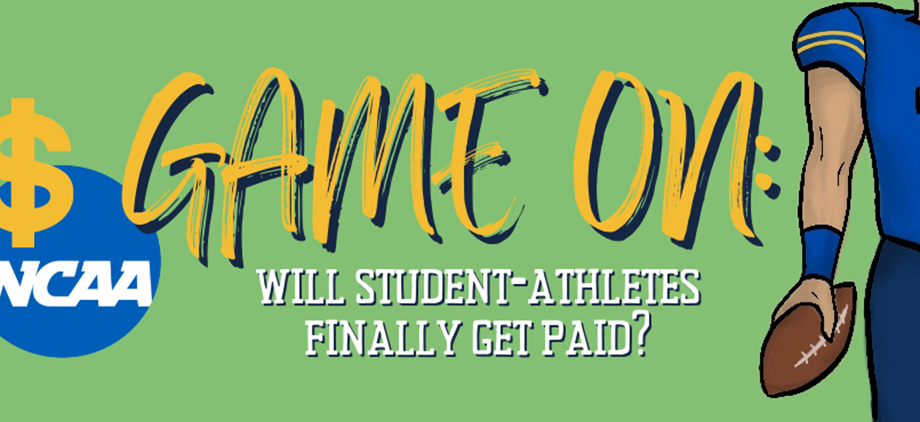Author: Jay Sahaym, Graphics: Nina Tagliabue
The BRB Bottomline:
After years of resistance, the NCAA has finally allowed student-athletes to profit from their NIL rights. What does this say about the state of the lucrative college athletics industry?
On any given Saturday in the fall, millions of people fill up stadiums and turn on their TVs to watch college football. In the spring months, college basketball takes over the country in a tournament known as“March Madness.” Over the last century, collegiate sports and the NCAA, its governing body, have become an integral part of American culture. College sports often have a greater aura of relatability as the competitors are students in their late teens or early twenties, playing for the love of the game.. However, fans still pay for tickets and networks pay for broadcasting rights.
So where does that money go?
Money Talks
For an organization that espouses the principles of amateurism in athletic competition, the NCAA certainly generates an impressive amount of money. Specifically, the organization has generated over 1.1 billion dollars in revenue in pre-pandemic times, even without counting the revenues of individual athletic departments. When combined with the revenues of member schools, collegiate athletics forms a nearly 19 billion dollar industry.
Clearly, the NCAA receives ample rewards from its role as the organizer and promoter of these events at the collegiate level. But what about the people creating the product? Coaches get rewarded quite handsomely; in many states such as California, the highest-paid state employee is a head football or basketball coach at a public university. Additionally, contracts for coaches in these sports often average seven figures per year. Of course, the most successful coaches make the most money and have the longest contracts. Conversely, athletes, who are the more important members of the labor force, make no money at all. In Bylaw 12.1.2, the NCAA expressly denies schools giving players any form of payment for their skill. This policy has become controversial in recent years, with football players at Northwestern failing in their attempt to unionize and collectively bargain. Athletes were even prohibited from benefiting from their own name, image and likeness, or NIL, preventing them from getting endorsement deals or even running a YouTube channel.
Under Pressure
For years, the NCAA was able to resist any pressure put on it by student athletes. However, this summer, the NCAA was put under pressure by state governments following the lead of California’s Fair Pay to Play Act. Furthermore, the Supreme Court case NCAA v. Alston found the NCAA in violation of antitrust laws by failing to provide fair compensation to the players. The NCAA was finally forced to concede some rights to the students. As such, NIL rules were suspended, leaving regulation up to state laws and university policies, starting July 1st of 2021.
The immediate impacts of this decision for students are clear to see. For the majority of student athletes, college athletics is the highest level of competition they will ever reach. The consistent exposure and loyal fanbase, combined with the reach of social media, create an environment in which many athletes are the most marketable they will ever be. For the highest-profile athletes, such as star quarterbacks and point guards, endorsements on the national scale totaling six or seven figures are now available.
Take-Home Points:
While the decision by the NCAA is a step in the right direction, it functions more as an optics move rather than truly addressing the lack of payment for labor. Neither the NCAA nor the member schools will pay their athletes under the new rules, so the rent-seeking structure of the organization and industry has not changed yet. Additionally, it is critical to remember that most athletes do not have national recognition and do not play a revenue sport such as football and basketball. For the average student athlete, there will likely be little reform: local sponsorships and camps are nothing close to the scale of the college sports industry. Though the Supreme Court and governments do look to be amenable to further rulings and legislation on this topic, little is expected to change for now.

